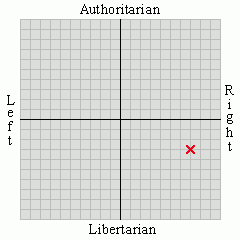
The tunnels are narrow, hot and clammy. Crawling along, even a short passage, is claustrophobic and uncomfortable. This is Chu Chi, a portion of the underground workings once used by the Vietcong during the ‘American War’, part of a sort of theme park, which I can only describe as Cong World. It’s not far from Ho Chi Minh City, the Saigon that was, where you will also find the War Remnants Museum, formerly the War Crimes Museum.
It’s all part of the mythology of the Vietnam War. Is there any conflict, I have to ask, more shrouded in mythology than Vietnam? In the midst of all of the little myths there is the big one – that America ‘lost’ the war. It did not. Such a contention is an abuse of the facts of history.
The simple truth is that the Americans won all of the major battles; that after the Tet Offensive of 1968 the Vietcong, the southern communist guerrillas, were a broken force and the North Vietnamese Army badly bruised. It was, in a sense, their Dien Bien Phu, a reverse of the defeat inflicted on the French in 1954.
If the war was ‘lost’ it was not lost by the soldiers but the politicians, by those who mismanaged the affair so dreadfully. There was also the dolchstoss - for once a meaningful expression -, the stab in the back, administered by much of the national press, ill-informed at one moment, lying at the next. Many of the reports verged on a form of treason, doing so much to undermine the morale of the nation, acting little better than a kind of communist fifth-column. I’ve met former veterans in Georgia, just boys when they returned from the war, spat on as ‘baby killers.’
I’ve been trying to build up a picture of the war from the ground, from the point of view of the ordinary American soldier. Here I have to thank Bob Mack, who served in the 1st Signal Brigade based at Nha Trang from 1967 to 1968, for sending me a copy of A Volunteer from America, a tremendous piece of work, one of the most vivid memoirs I have ever read. The pictures shown here are his also. Bob also runs his own blog, Be sure you are RIGHT, then go ahead (crockettlives.wordpress.com), a conservative delight!
Bob arrived in Vietnam from a station in Germany, immediately becoming one of the FNGs – fucking new guys. This particular FNG was sent to Nha Trang on the south central coast of what was then the Republic of Vietnam, supposedly a ‘safe’ sector. How safe the ensuing Tet Offensive was to show.

From my visit to Chu Chi I got a rough idea how the communist guerrillas used to live. I was under the mistaken expression that the Americans, when not on patrol or combat duty, were much more securely housed. Not so, not when one is also obliged to live in bunkers, places where the rats were the greater nuisance. And, oh my, what rats they were, a foot-long, burrowing endlessly, fearlessly entering ‘living’ quarters, feasting on whatever scraps they could find.
That was one enemy. The other, of course, came in a human form, also from all directions, another kind of scavenger. Conventional war is bad but at least one knows one’s opponents, one knows his dispositions and placements. In Vietnam the enemy was something of a chameleon: a fisherman at one moment could turn into a guerrilla fighter at the next. I can’t begin to understand how wearing this must have been on the nerves. Bob describes a return from a spot leave in Thailand thus;
…Dun Muang Airport…was not a happy place – too many men with guts knotted in dread of the prospect of returning to the hellholes from which they had recently been paroled. One poor soul broke down completely, crying and twitching while he babbled out his own obituary. A pair of G. I.s led him off to calm down while the rest of us looked down and pretended not to notice…
The Tet Offensive itself hit Nha Trang particularly hard. For a time the communists controlled much of the city before they were dislodged by a counter-offensive. Here and elsewhere ‘liberation’ was accompanied by murder. In Hue alone allied forces (which included units from the Republic of Korea, who had a particular loathing for the communists) discovered over 2,800 burial sites, containing the bodies of local teachers, doctors and political leaders. Just how miserable life was to be under what was effectively a form of colonial rule from the North the people of the South were to discover after 1975.

By then the Americans were long gone, the last troops leaving in March 1973. I met people in Saigon- the locals still use that name-, one-time members of the armed forces of the Republic of Vietnam, including a former officer who spent twenty years in a ‘re-education’ camp. That was his personal tragedy, one example in so many others. I can’t help but feel that the people of South Vietnam, a legally constituted state, were abandoned and betrayed. But they were not abandoned by the American military, which performed a credible service in the most trying and difficult of circumstances. Theirs is the greater honour.














































